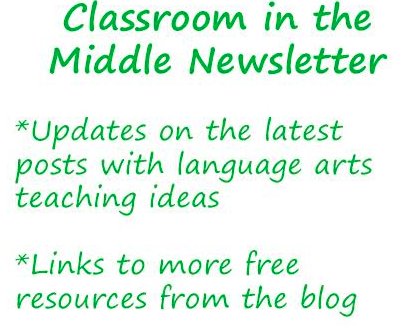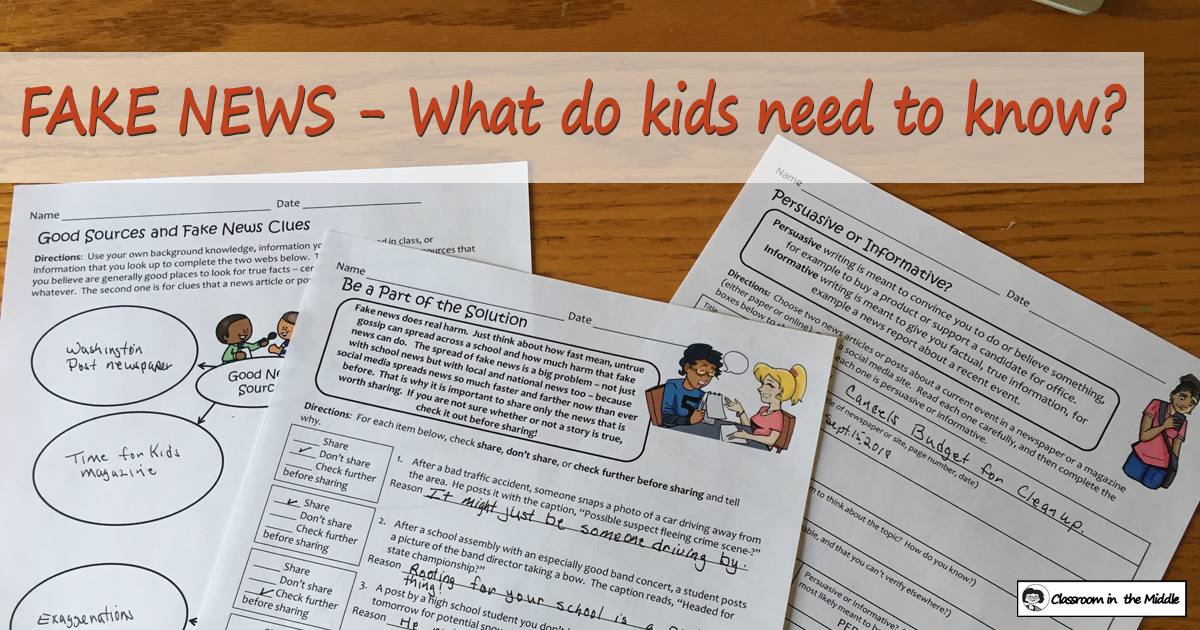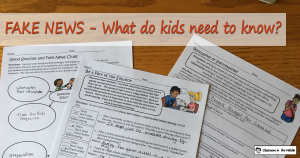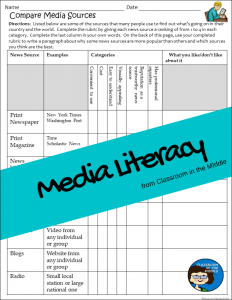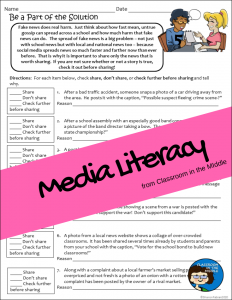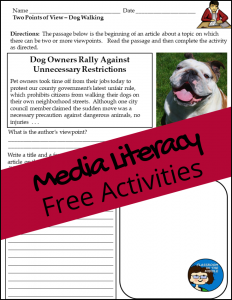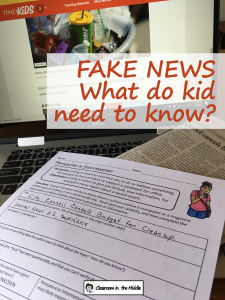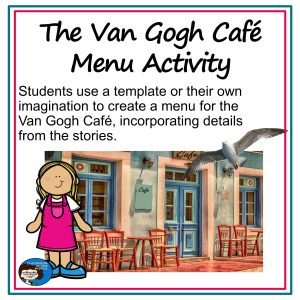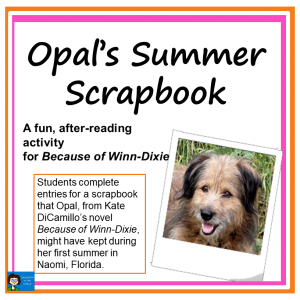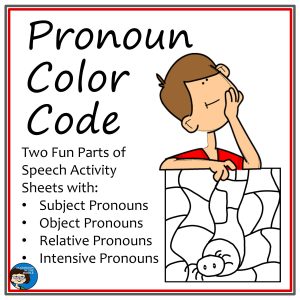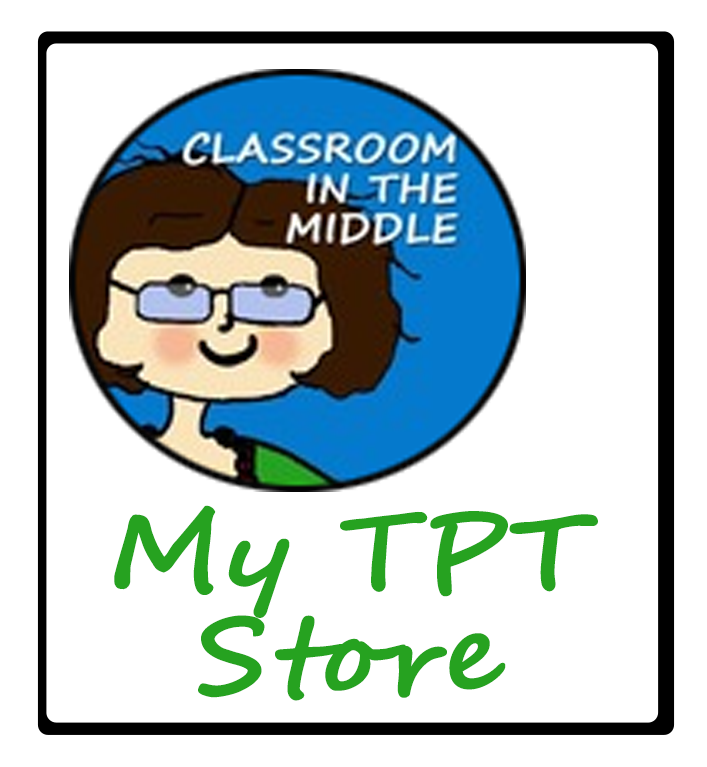When it comes to fake news, there’s a LOT that kids need to learn, and even teaching the meaning of fake news can be complicated because the term has been spun so often. Does it mean news that really isn’t true, or does it mean attacking real news by calling it “fake”?
This is one of the angles I had in mind as I was putting together my media literacy resources. There were a few topics that I definitely wanted to cover:
- How to tell the difference between informative and persuasive writing
- Identifying the author’s purpose and viewpoint
- Checking sources, and finding good ones
- News from various types of media
- How to avoid accidentally helping to promote fake news on social media
- Free activities (!)
Persuasive vs informative seems to me like a good place to start, since kids are already familiar with the idea from writing lessons. For this activity, I ask the students to choose two articles or media posts about the same current events topic. Then, they use a comparison chart to compare the information in the two, to compare the author’s point of view, and to identify any questionable details that maybe should be verified. You can see a little of this worksheet in the background of the image above.
Another activity along the same lines, shows the kids clips from old papers – news headlines, an ad, and a comic strip – and asks the kids to take a close look and identify the POV in each one.
One of my favorite activities is a page with two little webs for students to complete – one with their own ideas of good news sources and one with their ideas of clues to fake news. This one seems like a perfect lead in to a class discussion of news sources. You can also see a little of this one in the picture at the top.
Here’s another one about news sources. As you can see this is a pretty detailed chart for the students to compare various types of sources – print news, websites, TV, blogs, etc. This one may take a little prep, or again you could use it as a lead in to further discussion.
Kids can get tired of being warned about social media, so the following one gives it a positive spin by asking the kids to identify what they would do in different situations where they are trying to be a part of the solution. The kids respond to statements or descriptions of images by checking whether they would share that “information,” not share it, or need to check further. Here you can see that activity.
The full set, Finding Real News Among the Fake, includes ten separate activities plus three readings, each with discussion questions and an additional follow-up activity. Click on this cover image to preview the resource:
And how about the free activity? Actually there are three! Each one presents a short passage, similar to the beginning of a news or opinion article. Students are first asked to identify the author’s POV, and then to write the beginning of another article with the opposite viewpoint. There is also space for the students to include a little illustration to go with each one. Here you can see one of them.
Click on this cover image to download the freebie:

